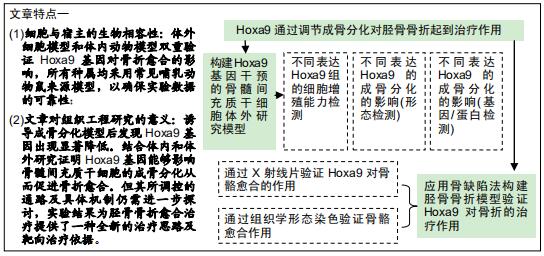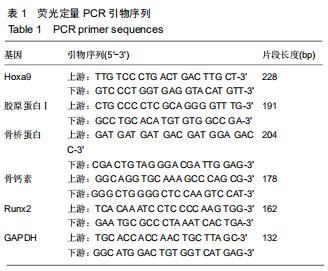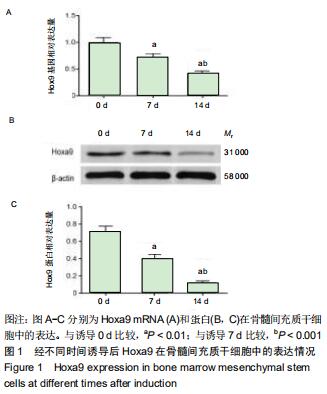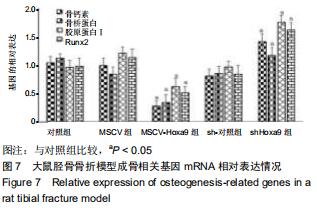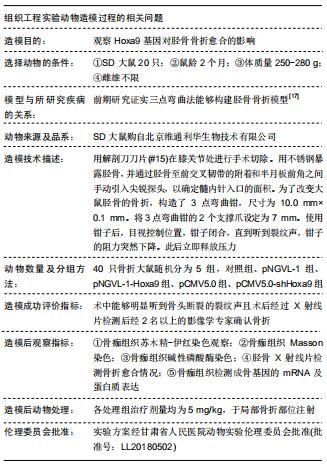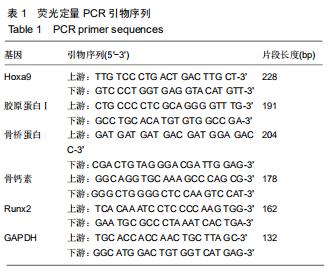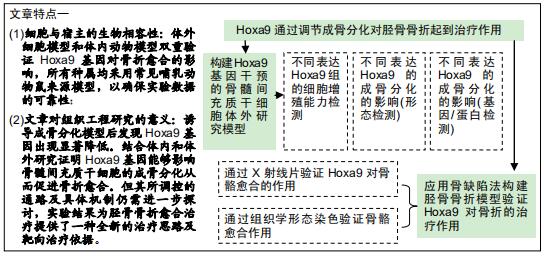|
[1] MELING T, HARBOE K, SØREIDE K. Incidence of traumatic long-bone fractures requiring in-hospital management: a prospective age- and gender-specific analysis of 4890 fractures. Injury. 2009;40(11):1212-1219.
[2] DUAN X, AL-QWBANI M, ZENG Y, et al. Intramedullary nailing for tibial shaft fractures in adults. Cochrane Database Syst Rev. 2012;1(1):CD008241.
[3] DAI J, LI L, JIANG C, et al. Bone Morphogenetic Protein for the Healing of Tibial Fracture: A Meta-Analysis of Randomized Controlled Trials. PLoS One. 2015;10(10): e0141670.
[4] 徐磊,夏江.胫骨平台后侧骨折的诊断及手术治疗进展[J].沈阳医学院学报,2016,18(6):494-497.
[5] CARÈ A, FELICETTI F, MECCIA E, et al. HOXB7: a key factor for tumor-associated angiogenic switch.Cancer Res. 2001; 61(17):6532-6539.
[6] SHAH N, SUKUMAR S. The Hox genes and their roles in oncogenesis. Nat Rev Cancer. 2010;10(5):361-371.
[7] ABDEL-FATTAH R, XIAO A, BOMGARDNER D, et al. Differential expression of HOX genes in neoplastic and non-neoplastic human astrocytes. J Pathol. 2006;209(1): 15-24.
[8] GOODMAN FR. Limb malformations and the human HOX genes. Am J Med Genet. 2002;112(3):256-265.
[9] COLLINS C, WANG J, MIAO H, et al. C/EBPα is an essential collaborator in Hoxa9/Meis1-mediated leukemogenesis. Proc Natl Acad Sci U S A. 2014;111(27):9899-9904.
[10] POJO M, GONÇALVES CS, XAVIER-MAGALHÃES A, et al. A transcriptomic signature mediated by HOXA9 promotes human glioblastoma initiation, aggressiveness and resistance to temozolomide. Oncotarget. 2015;6(10):7657-7674.
[11] HWANG JA, LEE BB, KIM Y, et al. HOXA9 inhibits migration of lung cancer cells and its hypermethylation is associated with recurrence in non-small cell lung cancer. Mol Carcinog. 2015;54(11):E72-E80.
[12] XU PP, ZHOU D, YAN GJ, et al. Correlation of miR-181a and three HOXA genes as useful biomarkers in acute myeloid leukemia. Int J Lab Hematol. 2019;42(4):16-22.
[13] LIU X, LIU X, LIU W, et al. HOXA9 transcriptionally regulates the EPHB4 receptor to modulate trophoblast migration and invasion. Placenta. 2017;51:38-48.
[14] 马明月.应用胚胎干细胞模型研究环境内分泌干扰物胚胎毒性的展望[J].沈阳医学院学报,2016,18(2):65-67,73.
[15] MOHR S, DOEBELE C, COMOGLIO F, et al. Hoxa9 and Meis1 Cooperatively Induce Addiction to Syk Signaling by Suppressing miR-146a in Acute Myeloid Leukemia. Cancer Cell. 2017;31(4):549-562.
[16] 杨晓红.miR-705对绝经后骨质疏松小鼠的骨髓间充质干细胞分化功能异常的调控作用[D].西安:第四军医大学,2013.
[17] HANDOOL KO, IBRAHIM SM, KAKA U, et al. Optimization of a closed rat tibial fracture model. J Exp Orthop. 2018;5(1):13.
[18] 席梦莹,李汶洋,张琳,等.鸢尾素促进大鼠胫骨骨折愈合的研究[J/OL].重庆医科大学学报,2019:1-7.
[19] 黄弘轩,张姝江,白波.调控骨髓间充质干细胞成软骨分化的研究进展[J].中华关节外科杂志(电子版),2017,11(6):655-660.
[20] 赵成礼.人工关节置换治疗老年股骨转子间骨折的优势与不足[J].中国组织工程研究,2019,23(24):3868-3874.
[21] 陈海涛,安玉光.桡骨骨折模型兔骨折愈合:特异性环氧化酶2抑制剂与非特异性环氧化酶抑制剂的比较[J].中国组织工程研究, 2019,23(15):2385-2390.
[22] 胡博森.矢车菊素-3-O-葡萄糖苷经MAPK信号通路调节成骨细胞增殖和分化的作用研究[D].沈阳:沈阳医学院,2019.
[23] 姜文涛,梅伟,王庆德,等.淫羊藿苷对成骨细胞增殖、分化及矿化的影响[J].中华实验外科杂志,2017,34(3):446-448.
[24] 鲍冲,朱扬,邓洲铭,等.成纤维生长因子受体2对小鼠骨髓间充质干细胞成骨分化能力的影响[J].中华实验外科杂志,2019,36(3): 502-505.
[25] 杨礼庆,董成建,朱姝.成骨分化与修复调控转录因子Runx2在股骨头坏死组织中的表达:非随机平行对照临床观察试验方案[J].中国组织工程研究,2016,20(17):2569-2574.
[26] VIJAY N, BANDANA AV, SU C, et al. Hoxa9 and Hoxa10 induce CML myeloid blast crisis development through activation of Myb expression. Oncotarget. 2017;8(58): 98853-98864.
[27] HUANG Y, SITWALA K, BRONSTEIN J, et al. Identification and characterization of Hoxa9 binding sites in hematopoietic cells. Blood. 2012;119(2):388-398.
[28] KO SY, NAORA H. HOXA9 promotes homotypic and heterotypic cell interactions that facilitate ovarian cancer dissemination via its induction of P-cadherin. Mol Cancer. 2014;13:170.
[29] 李琳.HOXB4、PRDM16及HOXA9基因在急性髓系白血病中的表达及其临床意义[D].青岛:青岛大学,2016.
[30] 何慧慧.斑马鱼造血系统发育过程中Hox基因的表达模式研究[D].上海:上海海洋大学,2012.
|
